Too often, we fixate on getting perfectly sharp images. We spend a lot of time worrying about crisp focus, sturdy tripods, and fast shutter speeds. What if, instead, we try some new digital photography techniques that embrace the concept of motion? We just might surprise ourselves with some fresh, creative images! Enjoy these great ideas from Barbara, and start experimenting.
Get Moving!
by Barbara Bender
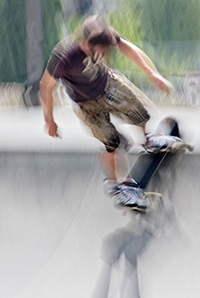
© Barbara Bender
We are told that moving our bodies is good for our health and keeping in shape. Movement can be beneficial photographically as well.
Most of the time, when we make a photograph, we do everything we can to hold the camera steady. Some place great value on photographs where everything is sharp, in focus and recognizable The use of a sturdy tripod, a beanbag support, or bracing ourselves, along with the selection of fast shutter speeds, are some of the ways we can avoid having our images ruined by camera shake or subject motion.
What happens, though, if we deliberately induce camera movement or allow the parts of our subject that are in motion, to freely move? If we experiment with these digital photography techniques, we can create photographs which can be expressive, evocative and impressionistic in nature if we are willing to try something new, make mistakes and view such images from a different perspective.
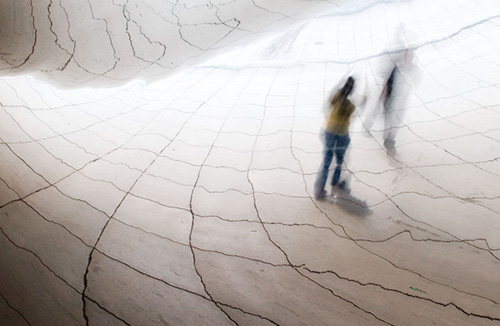
© Barbara Bender
Many mistakes will be made in learning to do this, and even those who are experienced in creating such images can have a high failure rate since there are so many variables which can affect the final outcome. Digital cameras are perfect for this kind of work because you can get an indication if your results are in an acceptable range by looking at the playback, and if not, settings or technique can be adjusted accordingly. Also, without film and processing costs, hundreds of images can be made and experimented with; all that is required is a lot of memory cards and batteries.
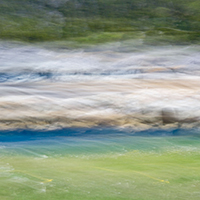
© Barbara Bender
In order to get the slower shutter speeds necessary for these digital photography techniques, use the lowest ISO possible, select a small f-stop to decrease the amount of light, and use a neutral density and/or polarizing filter on the lens.
If we experiment with these digital photography techniques…
"we can create photographs which can be expressive, evocative and impressionistic in nature if we are willing to try something new, make mistakes and view such images from a different perspective"
Subjects That Are In Motion
Instead of cursing the wind which blows the flowers and grasses about, or getting aggravated when people walk through your scene, embrace this motion, and play with it. With the camera supported on a tripod, select a slow shutter speed, and when you make your exposure, let things move about. The parts of the scene that are stationary will be sharp and in focus while the elements that move will be registered as soft swirls of colour. Each shutter speed will give a different effect, so keep trying different settings to see what works best. Eventually, with practice, you will find that certain ranges of shutter speeds are most effective in specific situations. The only way to learn this is to experiment and make mistakes. Remember, there are no magic numbers that work perfectly every time, so try several shutter speeds even within the range of numbers that seem best. Shoot at least 5 frames for each speed, with each setting. Elements move at different rates and patterns, so each picture will be different.
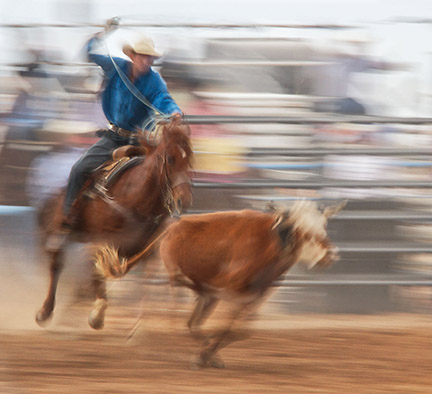
© Barbara Bender
Camera Motion Techniques
These digital photography techniques can be done either with the camera on a tripod, or handheld. Try both and see which works best for you. You may find that certain situations are better suited to one or the other. Again, use a variety of shutter speeds, and try moving your camera different ways. You can pan your camera in a smooth motion during the exposure, or you can try quick, jerky movements. The camera movement can be horizontal, vertical, circular, or even random jiggles. Begin your movement just before you depress your shutter, and continue for a second or two after the exposure has been made. The speed at which you move the camera, your shutter speed, how far away you are from your subject, and your focal length are only some of the variables that can affect the final outcome of your photograph.
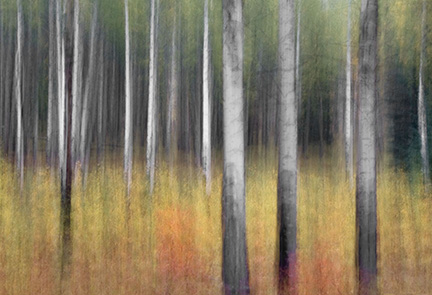
© Barbara Bender
Another way of creating motion effects is to rotate the barrel of a zoom lens from one extreme focal length to another during the exposure. Try zooming in and out, or out and in, and vary the speed that you do this. You can also attempt to do this while panning the camera at the same time.
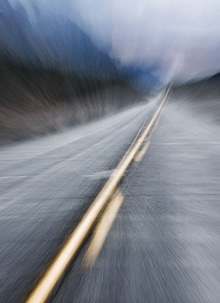
© Barbara Bender
These digital photography techniques of motion can be done on stationary subjects as well as in situations where the subject is moving. Experiment with all different types of subject matter and situations. Sometimes your subject will be identifiable, and sometimes the wash of shapes and colours appear very abstract. The most ordinary scene can appear unfamiliar and unusual by simply moving the camera deliberately or allowing the elements to freely dance and move.
Every image you make will be individual and unique; it is impossible to be precise, so keep an open mind and evaluate the results on their own merits instead of what you hoped to see. Often you can make "happy accidents."
I wonder if all this motion this can be counted as part of my daily exercise routine.
No?…didn’t think so! Too bad!
About Barbara Bender

Barbara Bender is a freelance professional photographer and writer who uses various creative techniques, emphasis on design, and simple, often graphic composition to make photographs which are frequently expressive in nature. Her photographs have been featured in such publications as Nature’s Best Awards Issue, Black and White Magazine, and Color Magazine. A series of articles on photographic Creativity and Playfulness was featured in PhotoLife Magazine in 2010. Over forty-five of her images have been used as book covers for Guernica Editions. As an active member of the Greater Toronto Council of Camera Clubs, she gives presentations and workshops on various photographic topics.
Next, you may want to explore your photographic creativity with some creative photography ideas.